Best Android smartwatch
The best smartwatches for Android, as reviewed and rated by our expert staff.

At a glance
1. Best overall
2. Best for Wear OS
3. Best budget option
4. Best premium pick
5. Best for athletes
6. Best battery life
7. Best fitness alternative
8. Best health tracking
9. Best hybrid
Honorable mentions
How to choose
How we test
Anyone hunting for the best Android smartwatches should obviously start with Wear OS. Samsung and Google have the best integration with phones and Gemini, the fastest updates, and the most advanced health and fitness tools.
But picking the best Android smartwatch for you isn't as simple as picking the Galaxy Watch 8 or Pixel Watch 4. You may prefer an alternative like the OnePlus Watch 3 for enhanced battery life with similar smarts, or you may want to ditch Wear OS altogether for weeks of battery life or better fitness tools.
I've tested dozens of smartwatches as Wearables editor, including most of the picks and alternates on this list, and the rest are watches that my colleagues have worn and recommended. These are the best Android smartwatches available today, based on features, affordability, style, and more.

Michael Hicks is Android Central's resident smartwatch geek, having reviewed or tested dozens of wearables from Samsung, Google, Apple, Garmin, Fitbit, Coros, Polar, Withings, Amazfit, and others. He spends his free time running or hiking while wearing several watches at once, testing which is most accurate.
At a glance
Best overall

Specifications
Reasons to buy
Reasons to avoid
The redesigned Galaxy Watch 8 raised eyebrows after four years of circular Wear OS models, but despite how polarizing the "cushion" design may be, it doesn't change the fact that Samsung still makes the most consistently reliable Android watches on the market, and the Watch 8 brings back all the features you loved on the Galaxy Watch 7 while adding some new ones.
Our Galaxy Watch 8 reviewer is actually quite the fan of the design. The boxiness allowed Samsung to shrink the overall thickness of the case and the bottom sensor, so it sits much flatter against your wrist. It's light and comfortable, both for workouts and sleep tracking. Samsung collects a ton of useful data during sleep, from Vascular Load and sleep apnea detection to your energy score and circadian rhythm, so comfort at night matters.
If you already own the Watch 7, you'll find the Galaxy Watch 8 vs. 7 comparison isn't so different that you need the new model, especially since Samsung bumped up the price. They still share the same performance and battery life, with most of the same sensors. Unless you want niche tools like the antioxidant index, you can stick with your older model. But the Watch 7 was our "best Android watch" pick for 12 months, so this isn't a knock against the Watch 8.
A new Watch 8 gives you One UI 8 Watch, with perks like upgraded Tiles and the Now Bar; the software feels more Android phone-like than other Wear OS watches, and Samsung will give you four more OS updates through 2029. That kind of value is darn impressive, not to mention you get to enjoy Gemini on your wrist.
Attribute | Quick look | Score |
|---|---|---|
Display | 2 sizes, 3,000 nits, narrow-bordered, with a digital bezel trick | ★★★★★ |
Design | Very comfortable and light, but not everyone will like its look or having to buy new bands | ★★★☆☆ |
Price | More expensive than last year, about the same as Pixel and OnePlus watches, but size/ LTE upgrades are affordable | ★★★☆☆ |
Performance | Fast, revamped Exynos processor with plenty of RAM. | ★★★★★ |
Battery life | 40–48 hours is only average now for a Wear OS watch | ★★★☆☆ |
Health | Complete sensor suite with accurate data and sleep analysis. Now with new perks like Vascular Load, antioxidant index | ★★★★☆ |
Fitness | Dual-band GPS and HR accuracy are pretty reliable, but Running Coach has issues. You may want to use a third-party app for fitness. | ★★★☆☆ |
Software | Four Wear OS updates, One UI Watch is a popular option with Google & Samsung apps | ★★★★★ |
Best for Wear OS

Specifications
Reasons to buy
Reasons to avoid
The Google Pixel Watch 4 took the Watch 3 template and refined it, enlarging the display without changing the size by giving it a unique 3D dome shape instead of your typical flat display. Likewise, the "new" Snapdragon W5 Gen 2 has the same cores and general performance as the Gen 1 in the Watch 3, but it's a few hours more efficient and adds satellite connectivity for emergencies. Don't forget to check out the best Google Pixel deals of Black Friday 2025 for major savings on the Pixel Watch 4.
In other words, the Pixel Watch 4 vs. Pixel Watch 3 isn't a drastic hardware change, though you will enjoy new perks, namely the vivid 3,000-nit display, improved skin temperature sensor for illness detection, significantly faster charging, and dual-band GPS. The latter helps the Pixel Watch 4 be a better fitness watch than its predecessor.
Running Wear OS 6 out of the box, the Pixel Watch 4 features a revamped UI with smoother navigation, better color theme customization, and new Tiles that are more useful than their plain predecessors. It'll receive three years of updates, though only two version updates to Wear OS 8 are guaranteed. And by end of October, Google will be launching a revamped Fitbit coaching experience that uses Gemini to give you custom workout recommendations.
Put all this together, and you can see why the Pixel Watch 4 is undeniably one of the best Android smartwatches available today, and a real rival to the Galaxy Watch 8. I've already written my favorable hands-on impressions after weeks of testing, with the review to come soon.
Attribute | Quick look | Score |
|---|---|---|
Display | 2 sizes, brighter domed display, LTPO support, no sapphire glass | ★★★★☆ |
Design | Gorgeous and comfortable, made from aerospace-grade aluminum, but no premium materials | ★★★★☆ |
Price | Priced on par with Samsung and OnePlus watches, but size or LTE upgrades are more costly | ★★★☆☆ |
Performance | Snapdragon W5 Gen 2 doesn't change performance, but still reliably fast for apps and Gemini | ★★★★☆ |
Battery life | Improved battery life over predecessor (especially 45mm model), but still only average | ★★★☆☆ |
Health | Full range of Fitbit-brand sensors for tracking all kinds of data, with new sleep and temperature data | ★★★★★ |
Fitness | Fitbit Premium workouts, Daily Readiness, cardio load, Gemini AI coaching sounds promising but untested so far | ★★★★☆ |
Software | Wear OS 6 is a fantastic update and Gemini is reliable; will get fewer version / security updates than the Galaxy Watch 8 | ★★★★☆ |
Best budget option

Specifications
Reasons to buy
Reasons to avoid
When it comes to cheap Android watches, I tend to point to sub-$200 models like the Galaxy Watch FE or step outside of Wear OS into cheap fitness brands. But if you're looking for a quality experience rather than a compromised one, the OnePlus Watch 2R skirts the line better than most affordable watches.
I really liked the OnePlus Watch 2R during my review period because it spared me the daily charges of my other Android watches. It lasts about three days, all thanks to a large battery and an efficient, proprietary coprocessor that handles background tasks. And once the battery runs low, it'll recharge in an hour.
It also performed quite accurately during a fitness test in terms of GPS, heart rate, and steps. And many people will appreciate its striking look; when I held a smartwatch beauty pageant, the OnePlus Watch 2R beat every other traditional smartwatch, including popular Samsung and Google models.
If you want the best possible quality, the OnePlus Watch 3 included later on this list makes significant upgrades. And OnePlus is slow to update its watches; it's still behind on Wear OS 5, though it promises to deliver it soon, with OS 6 coming next year. You may prefer a newer option for more software support; just be ready to pay more.
Attribute | Quick look | Score |
|---|---|---|
Display | Quite large and decently bright, but Watch 3 is brighter / smoother and comes in two sizes | ★★★☆☆ |
Design | Subjectively attractive and not as heavy as some models, but less premium materials and no crown | ★★★☆☆ |
Price | Very good value ratio, outperforming comparably priced watches for power and apps | ★★★★★ |
Performance | Matches other Wear OS models with Snapdragon W5 and 2GB RAM | ★★★★☆ |
Battery life | 3-day battery and speedy charging are this watch's best selling points | ★★★★★ |
Health | You get the basics like sleep and heart rate, but no ECGs, skin temp, women's health, etc. | ★★☆☆☆ |
Fitness | Delivers accurate data with dual-band GPS, but you'll need a third-party app for training suggestions | ★★★☆☆ |
Software | Two more Wear OS updates and security years left, but OnePlus a bit slow to deliver them | ★★★☆☆ |
Best premium pick
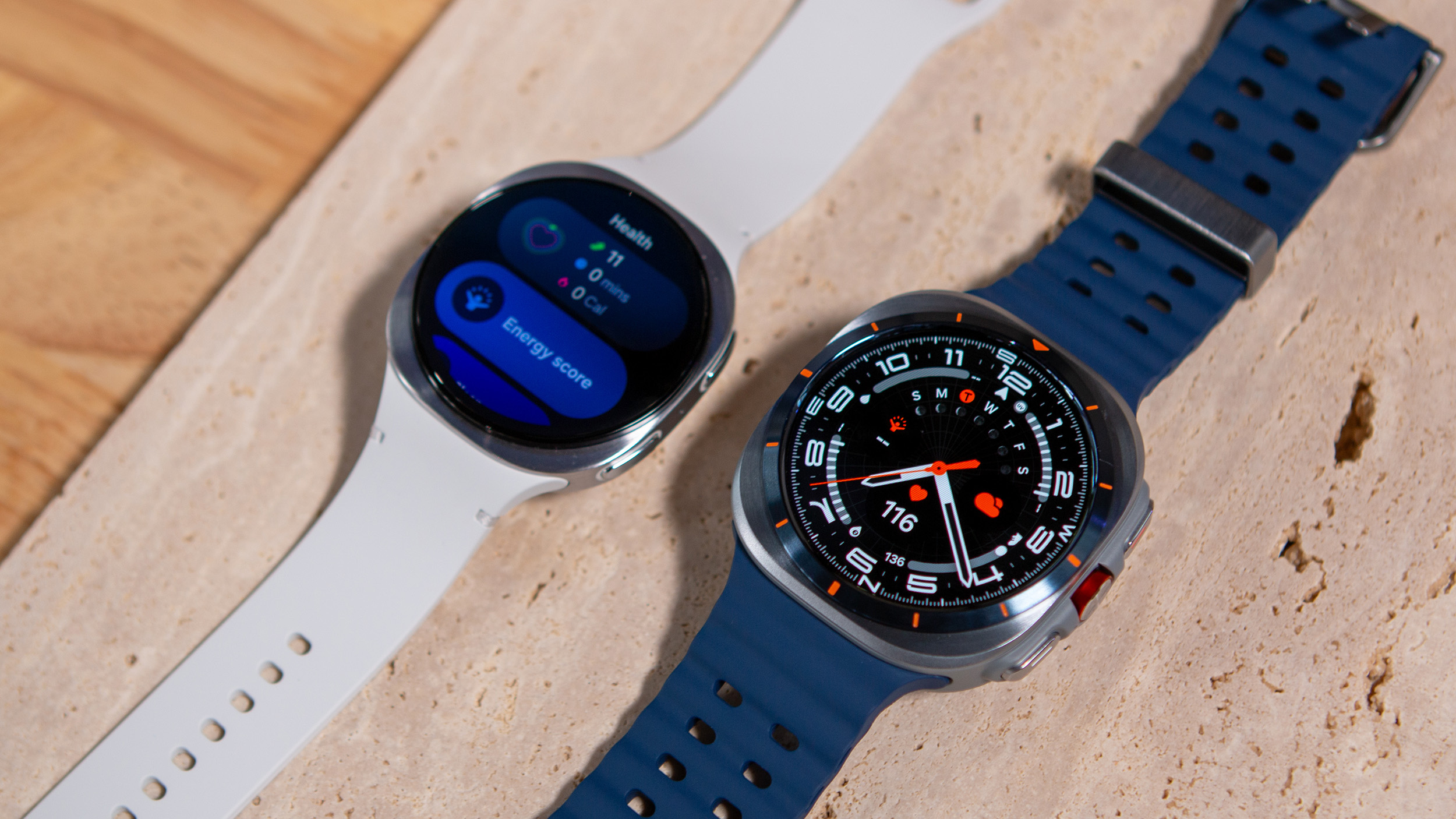
Specifications
Reasons to buy
Reasons to avoid
After first releasing the Galaxy Watch Ultra in 2024, Samsung rereleased it with doubled storage and a new Titanium Blue case but otherwise left it unchanged. With the Galaxy Watch 8 adding a 3,000-nit display and the Galaxy Watch 8 Classic adding the Ultra's extra Quick Button, the Watch Ultra doesn't stand out quite as much. Still, power users will want the Ultra's extra day of battery life.
In my Galaxy Watch Ultra review, I highlighted some excellent perks like the excellent fitness accuracy, its better display brightness, and its "undoubtedly faster" performance compared to previous generations. I appreciated the extra Quick Button for shortcuts, though I wished that (A) it doubled as a crown to make up for the missing Classic bezel and (B) it let you add multiple shortcuts outside of workouts.
Like the Galaxy Watch 5 Pro, the Watch Ultra has a 590mAh battery, larger than the 325–435mAh capacity found in the Watch 8. It consistently lasts 60+ hours with the always-on display feature active; while it can't match the OnePlus Watch 3, it does mean you won't have daily charging.
Attribute | Quick look | Score |
|---|---|---|
Display | Bright and gorgeous, but no small option. | ★★★★☆ |
Design | Rugged titanium, useful third button, and stylishly distinct. Some will miss the Classic bezel or feel the weight. | ★★★★☆ |
Price | More expensive than any other Android or Galaxy Watch by far; find a trade-in deal. | ★☆☆☆☆ |
Performance | Top-tier performance, though no faster than Watch 8. | ★★★★★ |
Battery life | 60–100 hours based on settings, or 16 with GPS; consistent and reliable. | ★★★★★ |
Health | Like Watch 8, offers thorough and accurate health data, including new metrics like antioxidants and heart health. | ★★★★☆ |
Fitness | Performed on par with a Garmin for GPS and HR accuracy; Energy Score is useful if you don't mind sleeping with it. | ★★★★☆ |
Software | Long and consistent Wear OS software support. | ★★★★★ |
Best for athletes
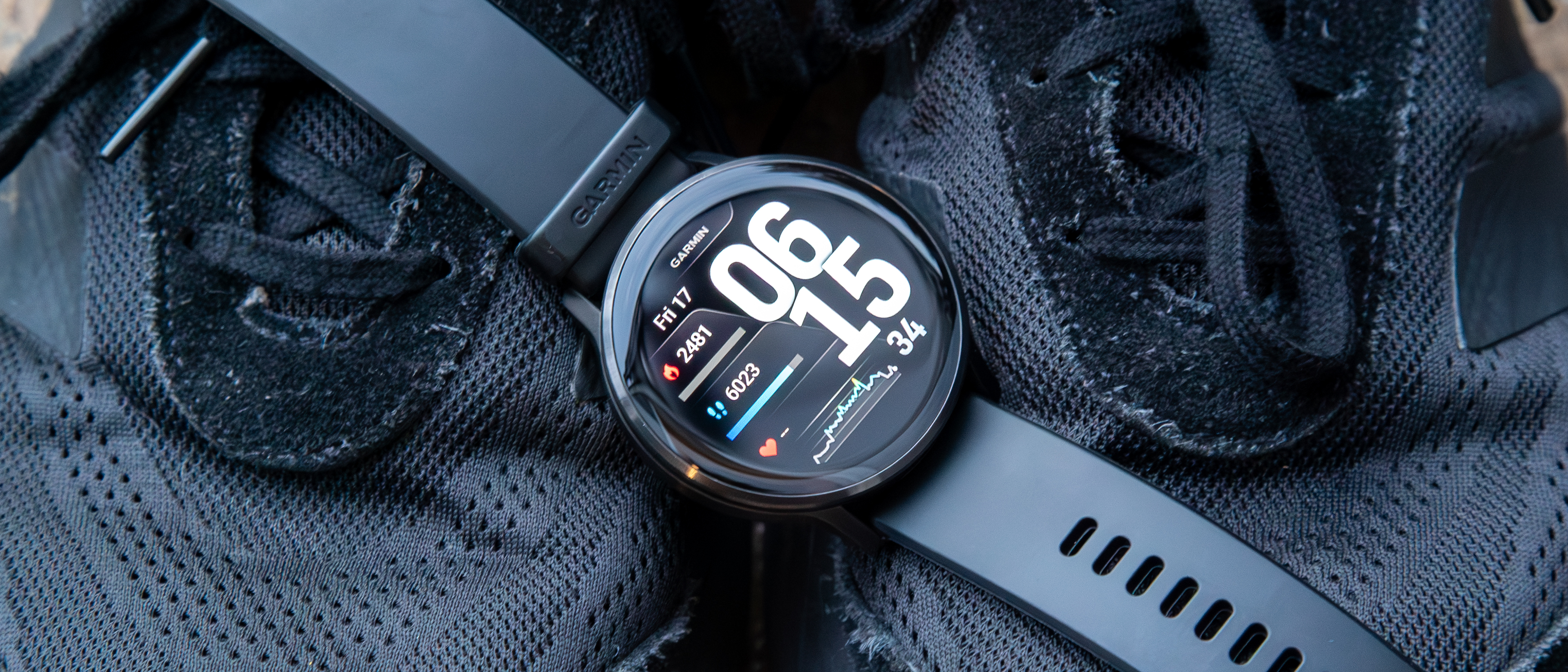
5. Garmin Venu 4
Our expert review:
Specifications
Reasons to buy
Reasons to avoid
I've focused on Wear OS watches so far, but the software comes with trade-offs for battery life, and they tend to focus more on mainstream health tools than dedicated fitness coaching. The Garmin Venu 4 is the type of Android smartwatch for people that need training guidance and dependable battery life more than Gemini.
While many of the best Garmin watches could fit on this list, I find the Venu series is the best option for anyone transitioning from a traditional smartwatch. You have a mic & speaker for both on-watch commands and passthrough commands to your phone, so you can still ask Gemini questions even if it's not officially supported. You also get a handful of apps, including YouTube Music, Spotify, and Google Maps, and basic message replies with a QWERTY keyboard.
Really, though, you're paying for Garmin's in-depth coaching tools. There are far too many to discuss here, but the highlights include a new Fitness Coach that gives you customized workouts across 20+ sport types, both indoor and outdoor; training load broken into intensity levels; post-workout recovery time suggestions; and downloadable courses.
I used to recommend the Venu 3 in this slot, but the Venu 4 beats the Venu 3 in several key ways, including more accurate GPS, a twice-as-bright display, a built-in flashlight, and many of the training tools listed above. The Venu 4 also introduced a new Health Status widget that creates a baseline for your normal HR, HRV, blood oxygen, skin temperature, and respiration rate stats, then warns you if you're out of your normal range.
The most dedicated athletes will want the Forerunner 970 or Fenix 8 instead, but the Venu 4 is more affordable and well-rounded, with fewer buttons and a more attractive design if you want a watch that blends in on your wrist.
Attribute | Quick look | Score |
|---|---|---|
Display | Two size options, better brightness than last generation | ★★★★☆ |
Design | Comfortably light compared to your typical Wear OS watch, but more stylish than most Garmin watches; no sapphire glass | ★★★★☆ |
Price | While it's much cheaper than premium Garmin watches, it's more expensive than most smartwatches | ★★☆☆☆ |
Performance | Optimized for long battery life; it has a new Garmin OS that's more intuitive and a few apps, but not as smooth as Wear OS | ★★☆☆☆ |
Battery life | Longer battery life than any Wear OS watch, though some Garmin watches last longer | ★★★★★ |
Health | Accurate HR and sleep with skin temp, capable of continuous SpO2 for jet lag tracking, plus Health Status and Lifestyle Logging, with no subscription | ★★★★★ |
Fitness | Nearly every Garmin training tool you could want aside from offline maps, including daily suggested workouts, training load/ status | ★★★★★ |
Software | More third-party apps for music or maps than your typical fitness watch, though still very limited in some ways | ★★★☆☆ |
Best battery life

Specifications
Reasons to buy
Reasons to avoid
The OnePlus Watch 3 has the best battery life in a Wear OS watch, easily lasting between four and six days per charge and then recharging in an insane 30–40 minutes, so you almost never need to take it off.
While the OnePlus Watch 2 and Watch 2R had strong battery life, the Watch 3 uses a denser silicon-carbon battery for a further capacity boost. And this model made several key improvements over its flawed predecessors.
The rotating crown is no longer decorative, offering useful controls. The new 1.5-inch LTPO AMOLED display hits a much brighter 2,200 nits but uses flicker-free DC dimming to spare your eyes. And while the Watch 2 had a slow coprocessor that struggled with RTOS tasks, the new 6nm co-processor sports a 200 percent CPU boost that handles background tasks like sensor readings and notifications without the same bugginess.
Our OnePlus Watch 3 reviewer had tons of praise for the overall experience. It's much more accurate for workout and step tracking, it delivers on OnePlus's battery estimates for real-life use, and it has the "best digital crown on any smartwatch" with excellent haptics.
One major complaint was how heavy the OnePlus Watch 3 is, but OnePlus released a 43mm model for the same price that weighs about 20g less. Its 1.32-inch display has the same resolution as the larger watch, so it's more dense with pixels. Unfortunately, this model only lasts about two days per charge, on par with Google and Samsung.
Whichever size you pick, the OnePlus Watch 3 is a great option for OnePlus phone owners, or other Android fans who want Wear OS but better battery life. You just have to accept that OnePlus is at least a year slower than Google and Samsung to add updates.
Attribute | Quick look | Score |
|---|---|---|
Display | We like its brightness and smooth, flicker-free tech; there should be a smaller size option | ★★★★☆ |
Design | Military-grade ruggedness and stylish titanium/steel chassis will draw eye; comes in a second size now | ★★★★☆ |
Price | OnePlus has slashed the price to $359, making it more tempting than other options | ★★★★☆ |
Performance | Same CPU, storage as other Wear OS watches, but efficient coprocessor beats the competition | ★★★★☆ |
Battery life | Up to 120 hours, lasts longer — and charges faster — than any other Wear OS watch by far | ★★★★★ |
Health | More accurate and less bare-bones for health and fitness data, but no ECG in U.S., OHealth has improved recently | ★★★★☆ |
Fitness | Offers dual-band GPS, delivered very accurate workout data in our review tests | ★★★★☆ |
Software | Will receive two Wear OS updates and three years of security updates; offers similar Wear OS 5 experience to Pixel Watches | ★★★☆☆ |
Best fitness alternative
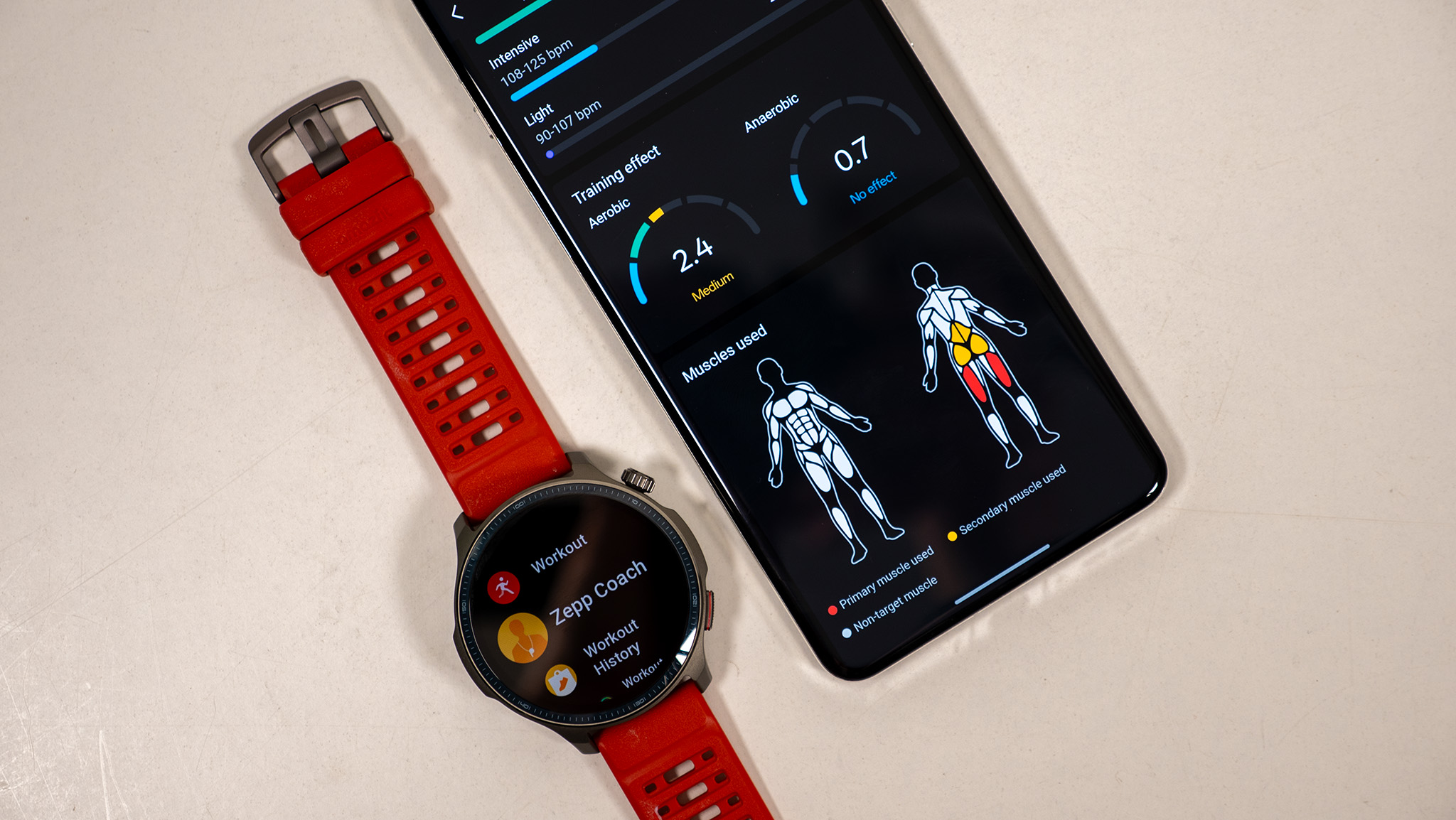
7. Amazfit Balance 2
Our expert review:
Specifications
Reasons to buy
Reasons to avoid
The quality of Amazfit watches has climbed significantly in the last couple of years. We originally chose the Amazfit Balance as our favorite budget fitness watch, but the new Balance 2 has reached a level of quality that it deserves to go toe-to-toe with other fitness watch brands, even if it's not quite as affordable as its predecessor.
Its scuba-quality aluminum build, sapphire-glass display along with 2,000 nits of brightness, weeks of battery life, offline maps for hiking, golfing, and skiing, and built-in mic and speaker for calling all make this a compelling fitness watch option. Add in the training load and recovery data after workouts and the AI coaching recommendations, and this option will impress athletes used to spending more on a fitness watch.
While we're still reviewing the Amazfit Balance 2, my colleague Nick loves its fitness software, from the auto-tracked reps and muscle groups at the gym to its option to log meals by taking a photo and having the app's AI recognize what it's looking at.
There are some limitations to accept. Without Wear OS, you don't get Google Assistant or Android apps like Spotify, though the Zepp Store does have some utilities and games. Zepp Pay works in Europe but not in the States, limiting tap-to-pay here. But at least there are on-watch options for messaging, and the excellent battery life may be worth those trade-offs.
Attribute | Quick look | Score |
|---|---|---|
Display | Bright and pixel-dense, but no small option | ★★★★☆ |
Design | Very rugged, but on the thick and heavy side for a fitness watch, with no premium materials or small option | ★★★☆☆ |
Price | Very reasonably priced compared to other top-tier fitness watches | ★★★★☆ |
Performance | It does have a few apps and smarts, but without the Play Store, you're a bit limited | ★★☆☆☆ |
Battery life | At least 10 days with heavy use or three weeks with "normal" use | ★★★★★ |
Health | You get the usual Zepp data (HR, SpO2, stress), but still no ECGs or skin temp | ★★★☆☆ |
Fitness | Excellent array of features across hundreds of sports, with offline maps, AI coaching, gym reps, and more | ★★★★★ |
Software | You're buying this for Zepp's fitness insights, not the apps. | ★★☆☆☆ |
Best health tracking

Specifications
Reasons to buy
Reasons to avoid
The Fitbit Sense 2 tracks your heart rate, heart rate variance (HRV), possible atrial fibrillation (AFib), blood oxygen, sleep quality, electrodermal body response (cEDA), stress levels (HRV), and skin temperature. When it first launched in 2022, these were all cutting-edge features, and they're still quite accurate if you want reliable health data with nearly a week of battery life.
Problem is, Google has stopped making new Fitbit watches aside from Pixel Watches, which stole the Sense 2's sensors; now the Pixel Watch 4 has moved on to even better sensors and HR algoritms. So the Sense 2 is the best option I can still recommend.
You'll get a Wear OS-lite experience, with Google Maps, Google Wallet, and YouTube Music supported. It's harder to recommend for non-Android fans, since it doesn't support playback controls or storage for any other music apps, but you're still getting Fitbit training insights for less than a Pixel Watch.
I may eventually stop recommending the Sense 2 if it gets too old, but for now, it's a solid option that's frequently on sale and is due to get the same Gemini AI coaching insights as the Pixel Watch 4 by end of October, refreshing the experience.
Attribute | Quick look | Score |
|---|---|---|
Display | One squircle display size with average brightness | ★★★☆☆ |
Design | Comfortably lightweight, but depends on whether you like squircles or not | ★★★★☆ |
Price | Expensive (esp. with Premium sub) for what it offers, so find a sale | ★★★☆☆ |
Performance | Optimized for battery life, but good enough for Google apps | ★★☆☆☆ |
Battery life | Six-day battery is respectable, though GPS battery life is shorter-lived | ★★★★☆ |
Health | Lives up to Fitbit's reputation with thoroughness and accuracy. | ★★★★★ |
Fitness | Fitbit's AI analysis and workouts are quite handy, if more geared towards indoor workouts. | ★★★★☆ |
Software | Unless you care about Google Maps, the Sense 2 software experience is very limited by design. | ★★☆☆☆ |
Best hybrid
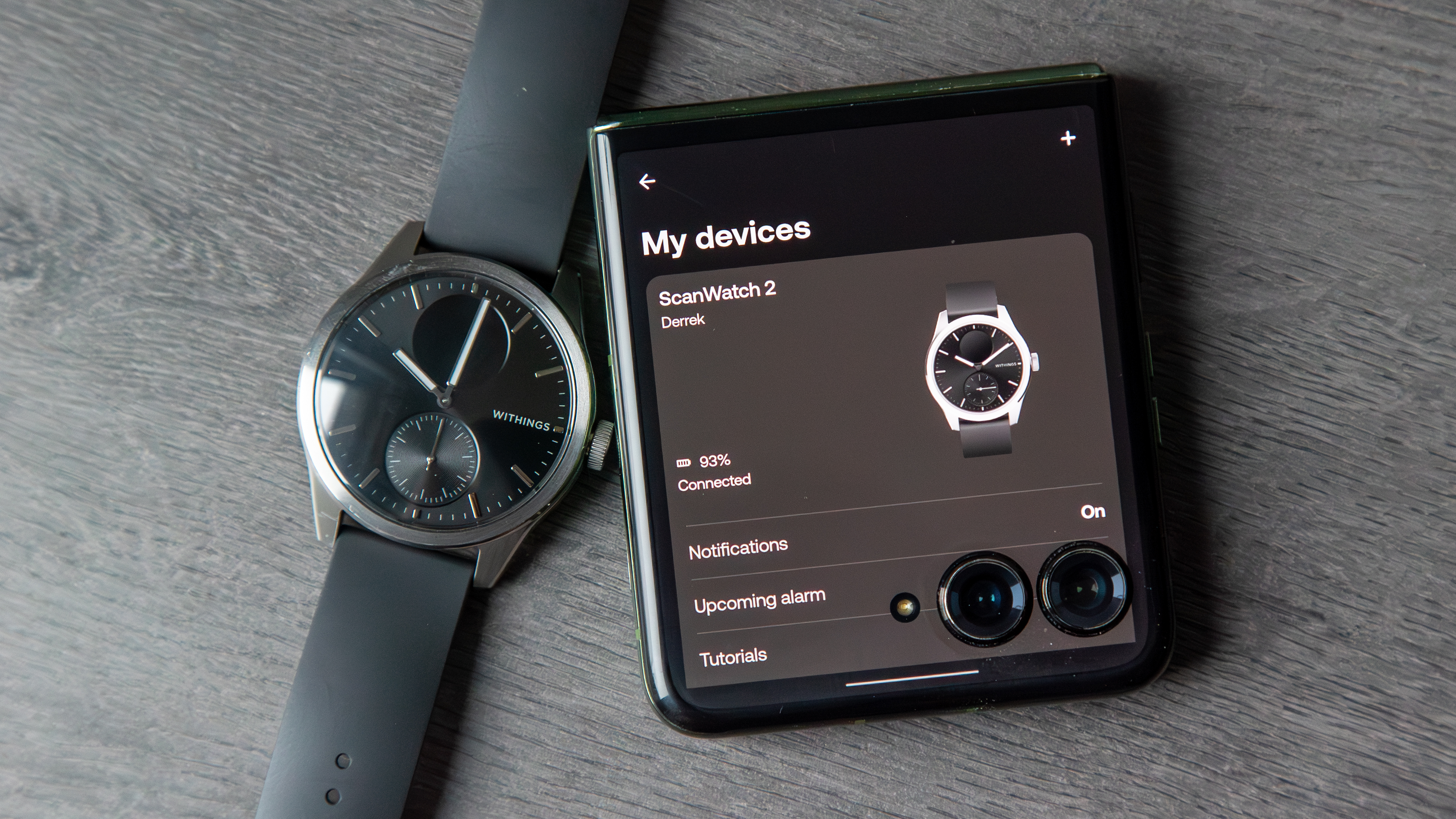
Specifications
Reasons to buy
Reasons to avoid
I'm rounding out this Android smartwatch list by focusing on hybrid watchess. Most smartwatches look good to tech geeks but won't appeal to fans of traditional watches; hybrid watches give you basic smarts and health tracking packed into a design that'll blend in as a "normal" watch, with the Withings ScanWatch 2 as the best option I've tested.
Winner of my informal smartwatch beauty pageant by a landslide, the Withings ScanWatch 2 disguises its small grayscale display so that it's only visible when you lift your wrist in response to a vibration. The tiny cutout is too small to show much information, but it's enough to give you the gist and decide if it's worth pulling out your phone or not.
Packed with health sensors, the ScanWatch 2 will fill your Withings app with data about your resting heart rate, sleep zones, body temperature changes, blood oxygen, cycle tracking, respiratory rhythm, and overnight HRV. You can also take an ECG measurement.
I wasn't the biggest fan of navigating through menus on the tiny screen, the fitness tracking is basic, and notifications aren't the easiest to read, so be prepared for that. Buy any other Android smartwatch above if smarts is the priority, but the ScanWatch 2 makes the other picks look dorky, and its 35-day battery life is fantastic.
Attribute | Quick look | Score |
|---|---|---|
Display | Tiny grayscale OLED is readable but an obvious downgrade | ★☆☆☆☆ |
Design | Much more attractive than any normal smartwatch, especially if you shell out for the ScanWatch Nova or Brilliant | ★★★★★ |
Price | A little expensive, and Withings will push optional subscriptions, but still very reasonable | ★★★☆☆ |
Performance | Doesn't have traditional apps | N/A |
Battery life | Excellent battery life, even with constant health data | ★★★★★ |
Health | Tracks wide range of sleep and health data; we experienced some sleep-tracking inaccuracies and a few promised features haven't arrived yet | ★★★☆☆ |
Fitness | Only gives you a few basic sports modes and no built-in GPS, so you'll need your phone. | ★★☆☆☆ |
Software | Again, no apps, NFC, or general "smarts" apply with this hybrid watch | N/A |
Honorable mentions
Our picks for the best Android watches focus as much on balance as possible, because we can't know what your priorities are. You might choose the Galaxy Watch Ultra or OnePlus Watch 3 for battery life, but otherwise they bring very different things to the table. And we have other watches in mind that last even longer than both, but do other things worse.
That's why we're including this section on picks that didn't quite make the cut, but still qualify as great Android watches in their own right. They're all devices that I or my colleagues have tested and liked, but may fall short to the above picks in key ways. Still, don't sleep on these watches!
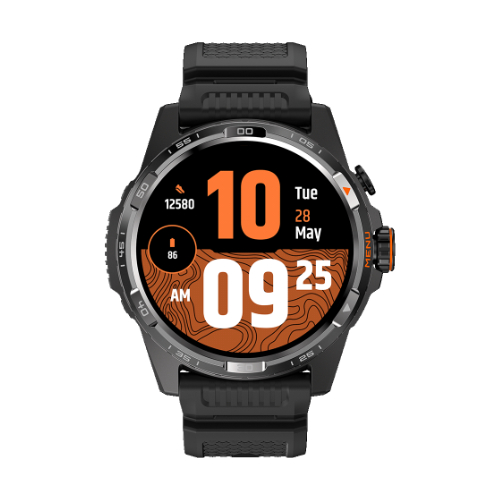
Both the Mobvoi TicWatch Atlas and TicWatch Pro 5 Enduro could reasonably appear on this list above some of the fitness watch picks. Both offer Wear OS 4 support, battery life that's at least on par with the Galaxy Watch Ultra, and useful fitness perks on top of the same Snapdragon power as the Pixel Watch 3. It's just hard to get past that it consistently falls a year behind for software updates and no longer supports Google Assistant — so you're unlikely to ever get Gemini.

The Garmin Vivoactive 6 has the same template as the Venu 4, focusing on all-around athletes, but with downgrades to cost about $250 less. If you can live without the steel bezel, newer health sensors with ECGs and skin temp, elevation tracking, and the mic & speaker, you can get nearly all of the same insights in a lighter and more affordable package.
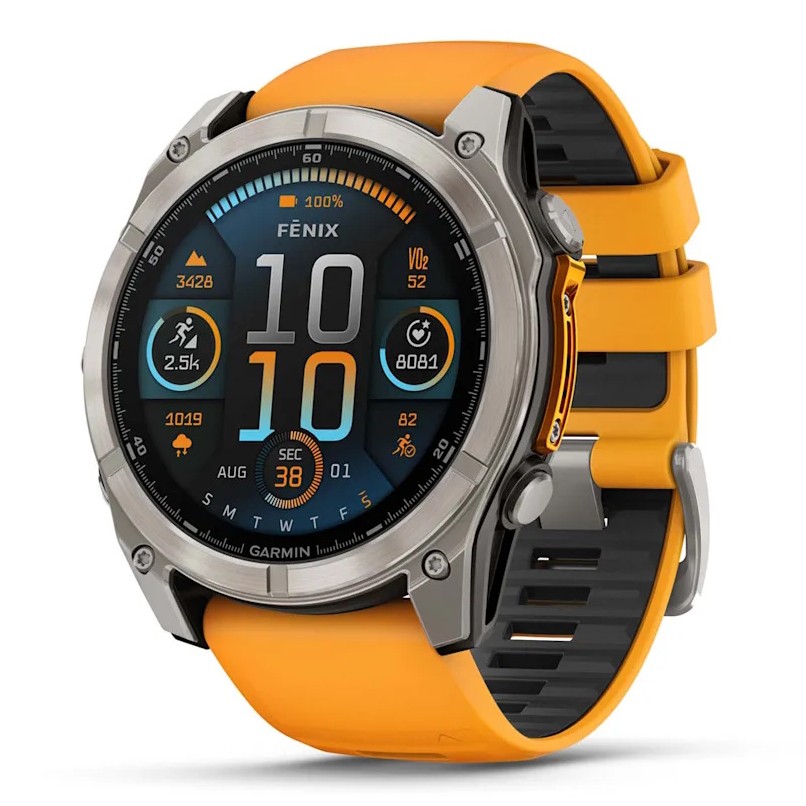
If we're truly talking "best Android watches" and ignore the price factor, you can't go wrong with the Fenix 8 because Garmin put literally every feature it has into it. It has fantastic battery life, better fitness tools than every other brand, and a premium titanium frame with dive-proof buttons that'll withstand almost anything. The main issue is that most people can't afford it.
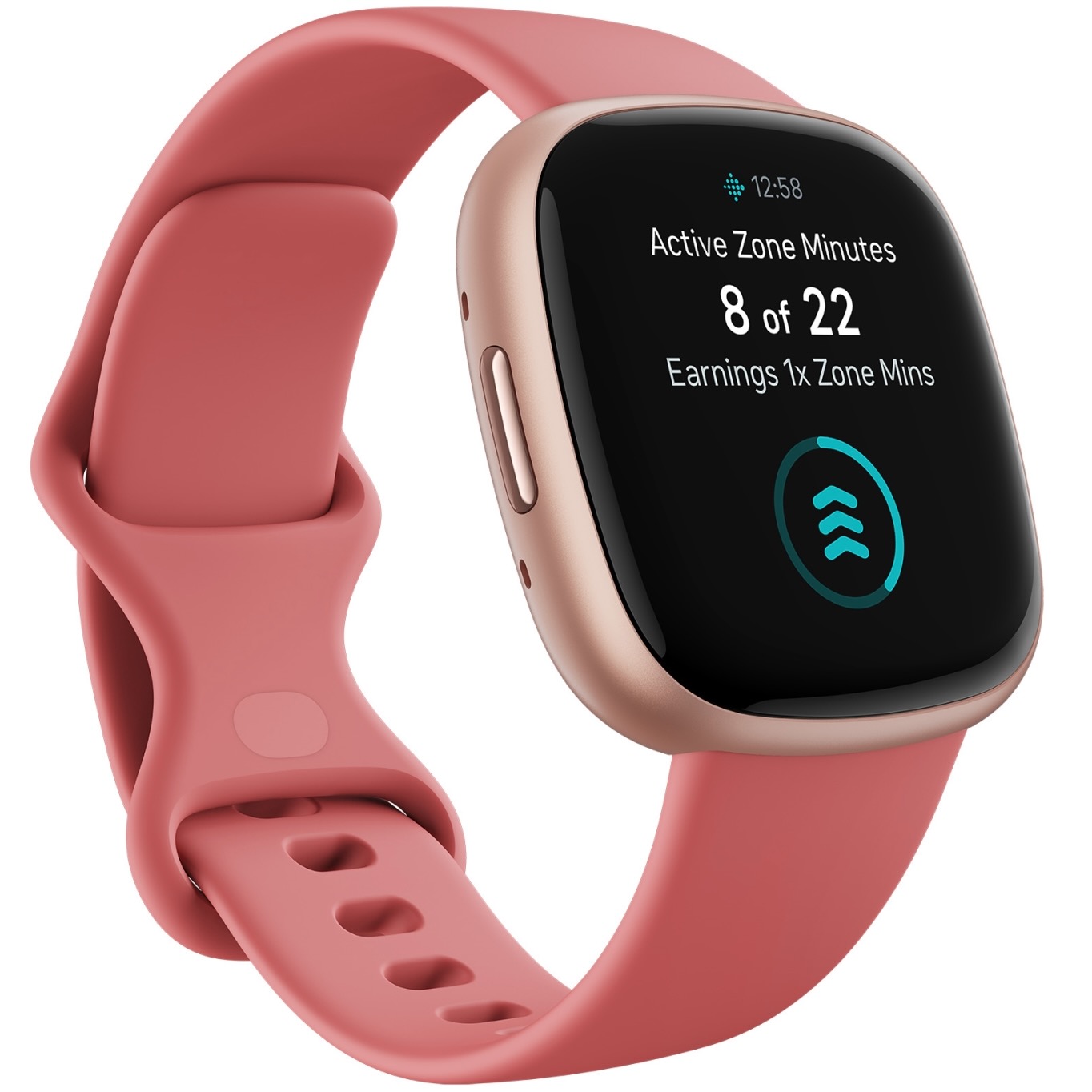
The Fitbit Versa 4 offers a lot of the same tricks as the Sense 2: It has the same display, built-in GPS, HR sensors, mic and speaker, Google apps, Fitbit Premium trial, etc. It also misses out on Fitbit's fancier sensors, so you're downgrading to focus mainly on heart rate and sleep stats. But despite our reviewer's valid frustrations — it has the same smarts downgrades as the Sense 2 — this is still a solid option if affordability is your first concern.
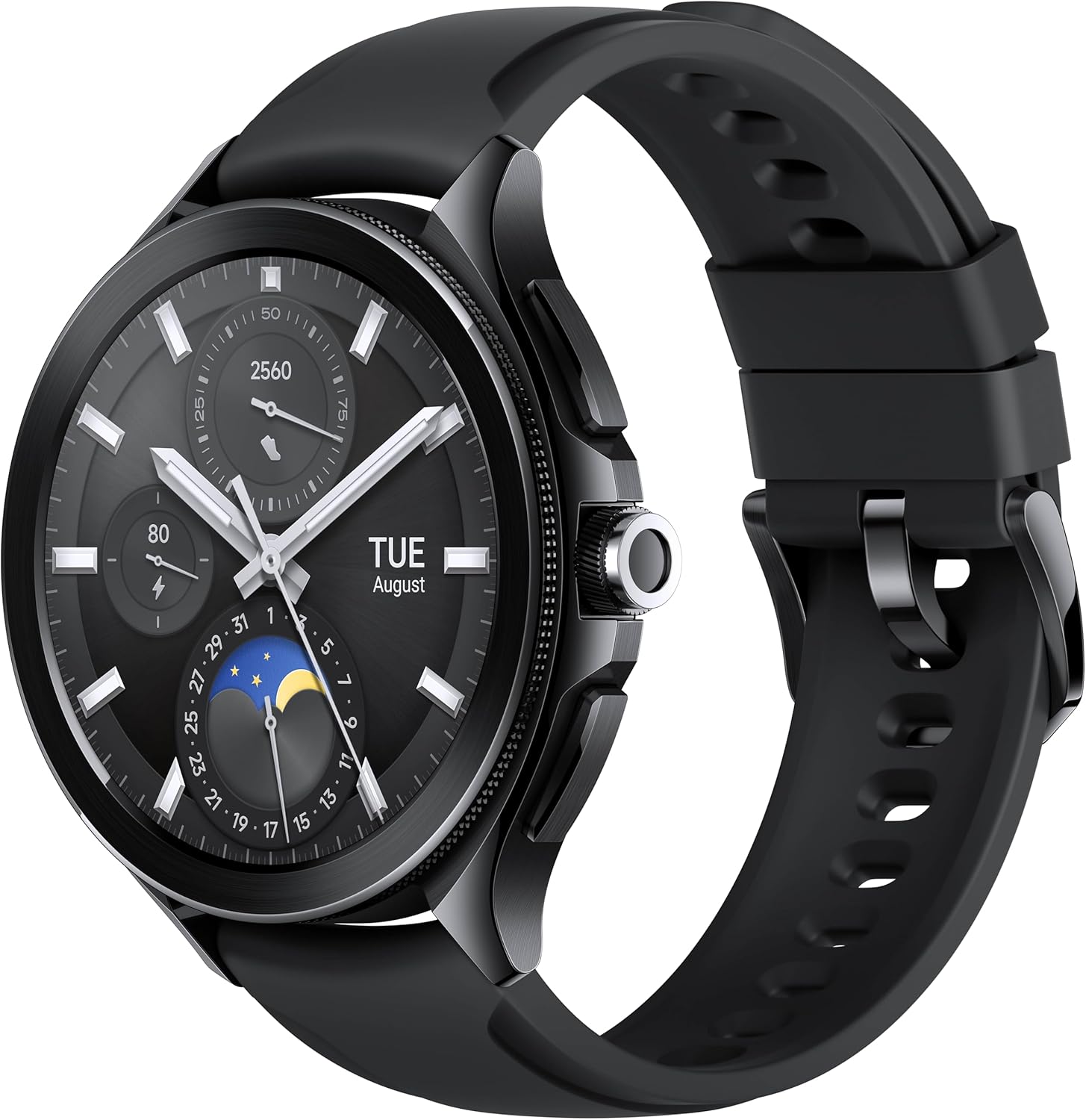
Xiaomi is the one Wear OS brand that we haven't managed to get ahold of review units for yet, as it's not officially available in the U.S. I've included it here because, on paper, it matches the OnePlus Watch 2 with a Snapdragon W5+ Gen 1 chip, 2GB of RAM, multi-day battery life, dual-band GPS, Wear OS 4 software, and attractive stainless steel design for an affordable price. We can't judge it for ourselves — hence the lack of a rating — but if you have a Xiaomi phone, go for it and let us know what you think of it!
How to choose
What brand makes the best Android smartwatches?
Why you can trust Android Central
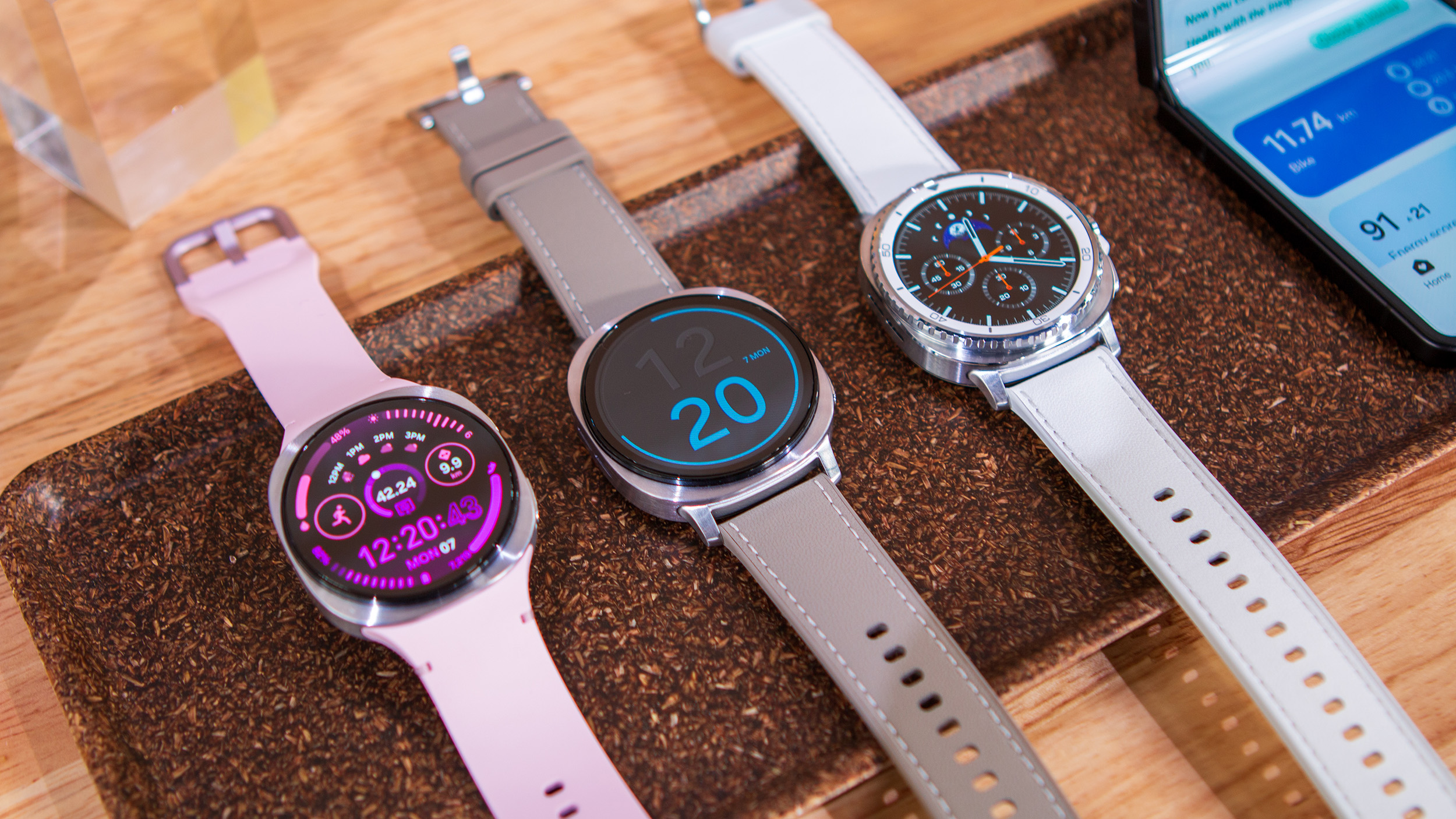
Samsung has the most picks on this list for a reason. You can choose between the premium Watch Ultra, all-rounder Watch 8, mid-level Watch 8 Classic, or affordable Watch FE based on your budget, and get an excellent level of value from even the cheap models.
They get more software support than any other Wear OS watch brand, and since Samsung is the most popular Android brand worldwide, the Galaxy Watch is statistically most likely to sync with your current Android phone, adding exclusive features.
We also like Google and OnePlus for quality Wear OS software, and brands like Garmin for those who use Android but prefer battery life and fitness coaching to responsive messaging or phone-watch app connectivity. But if we can only pick one brand, it's Samsung.
How do I choose smartwatch size?

We've included the weights for our top picks in the spec tables above. Brands measure the weight without the strap to make their watches seem lighter than they are, and every gram matters when you're wearing a smartwatch all day and night.
Several of our top picks ship in two display sizes. While the weight gap between the two Galaxy Watch 8s (4g) and Pixel Watch 4s (6g) isn't that big at first glance, larger models sometimes have larger bands, which can add even more weight. You'll have to weigh whether you can handle a heavier watch in exchange for easier readability for your notifications.
If you like a larger watch but are concerned about the weight, you can offset it a bit by choosing a nylon strap instead of a fluoroelastomer or metal one.
What features should I look for in a smartwatch?
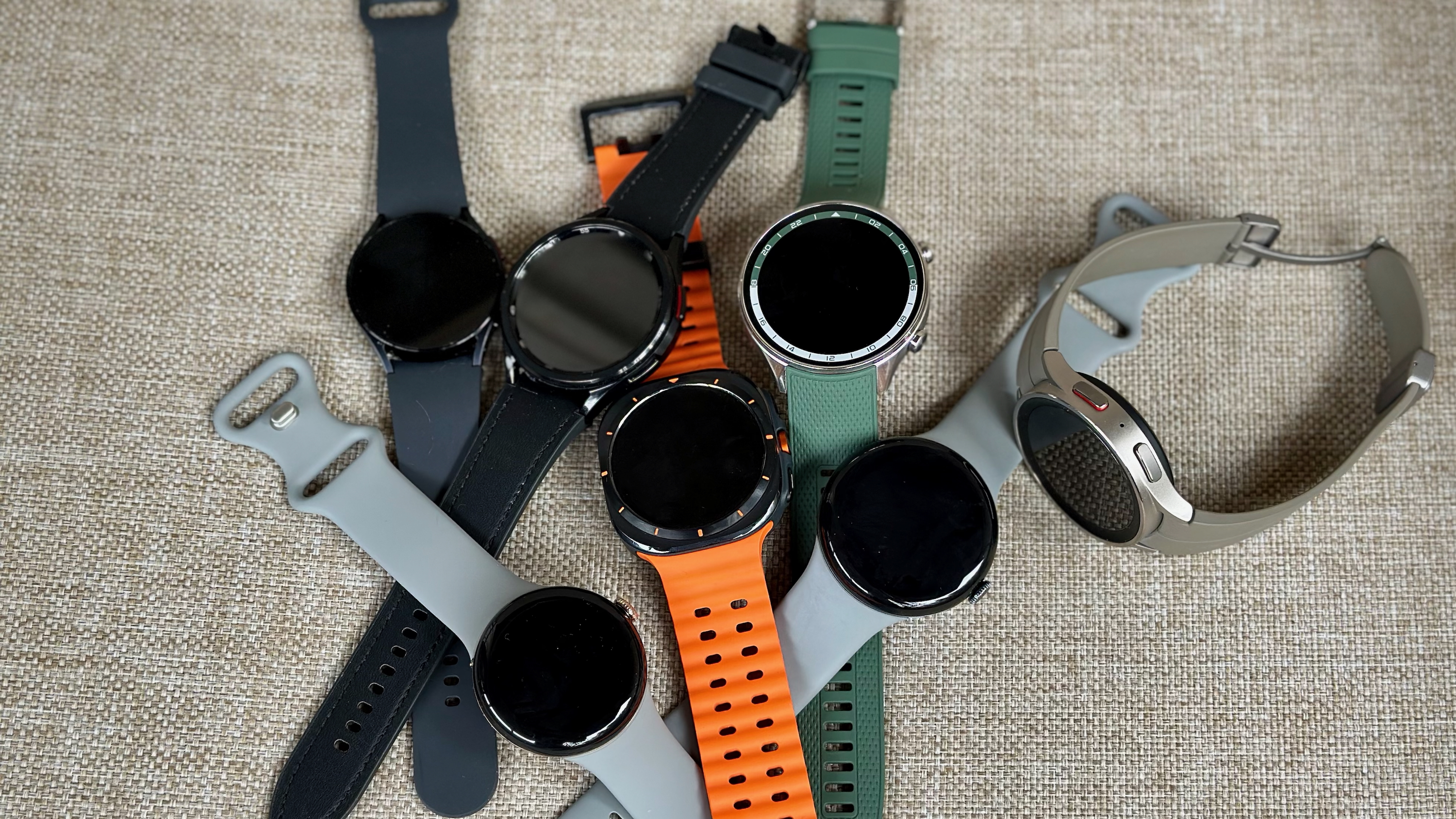
These are some key smartwatch features that you won't see by default, and may have to go out of your way to find:
- More than one day of battery life
- NFC
- Third-party app support
- Fitness training apps or plans
- LTE support
- Passive AFib detection
- Fall detection
- Multiple tracking satellites
- MIL-STD-810G protection
- Specific controls (e.g., crown, rotating bezel, multiple buttons)
- Specific sensors (e.g., temperature, gyroscope, altimeter)
Of these, we have specific guides on the best smartwatches with LTE so you can make calls or check in without your phone on hand, or the best smartwatches for GPS tracking that offer more than the standard watch antenna that can only follow one satellite at a time.
You'll want to check if your watch supports tap-to-pay, or will register if you've fallen while working out or walking around your home. Folks with heart issues will also want to make sure you can check for irregular heart rhythm, either actively with an ECG or passively with a standard optical HRM.
Also, check the smartwatches' specifications page before buying to make sure you know what you're getting. For example, if you don't see an altimeter, that means your watch can't tell how many flights of stairs you've climbed or properly judge how hard you're working out.
How much battery life do I need in a smartwatch?
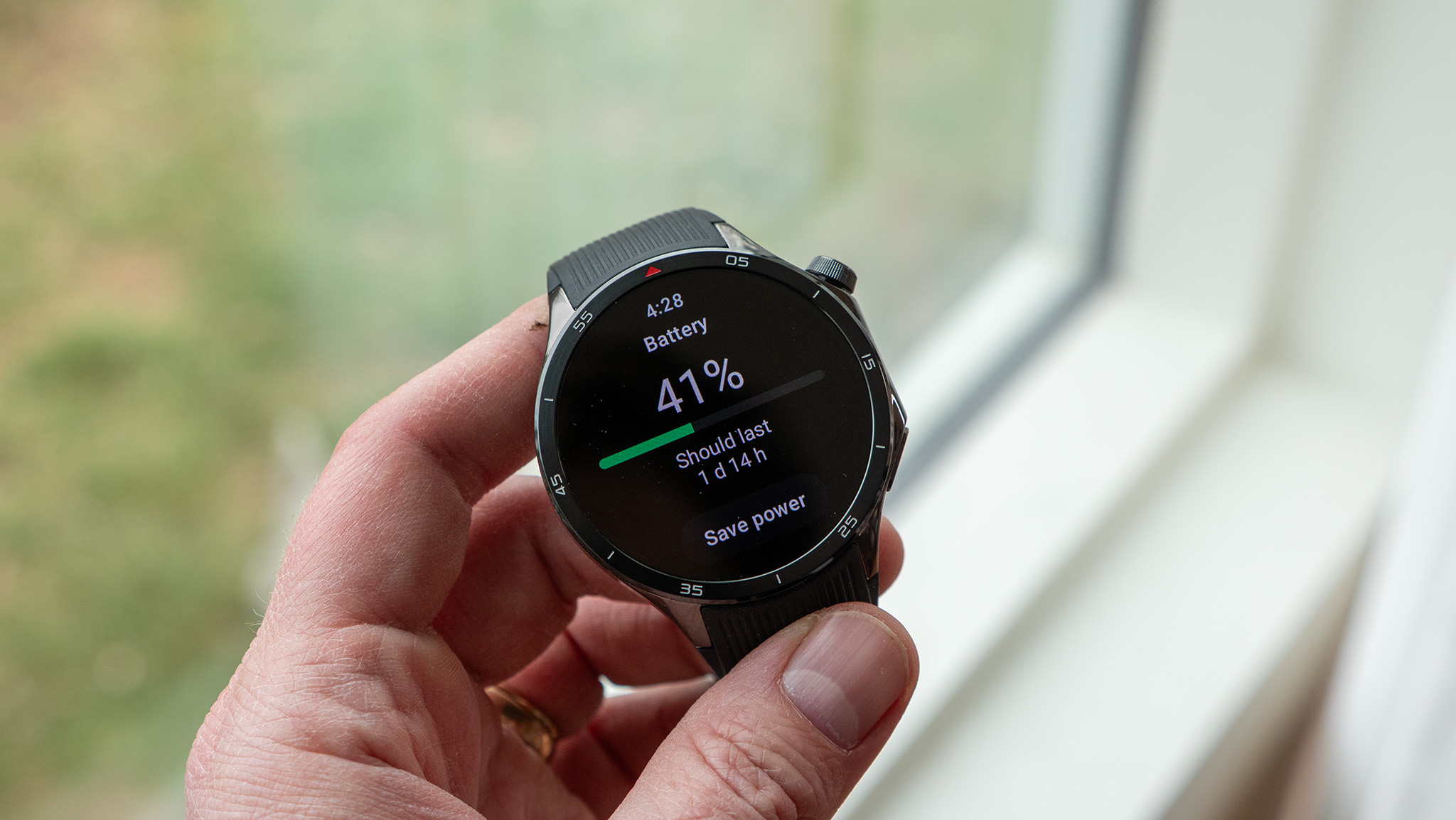
Some users can't stand having to take their watch off every 24 hours to charge it. Luckily, there are many multi-day battery life picks on this list.
The Galaxy Watch 8 and Pixel Watch 4 typically last between 1 and 2 days, with features like AOD, voice-activated assistant, and music streaming making them trend down towards daily charges. Even though they're the best Android watches in some areas, they're not the best for battery.
The Galaxy Watch Ultra gives you three-day battery life if you're willing to spend a premium. But you can spend significantly less on a Ticwatch Pro 5 and get comparable performance, or better performance with a OnePlus Watch 3.
Of course, three to five days isn't good enough for some people! If that's the case, then you don't want a traditional smartwatch with a full-fledged OS. You want an efficient fitness watch from Garmin, Fitbit, COROS, Polar, Suunto, or other fitness watch brands. These can last anywhere from a week (the Fitbit Sense 2) to two weeks (Garmin Venu 3), or sometimes even months with something like the Garmin Instinct 2X Solar.
Do smartwatches have a monthly fee?
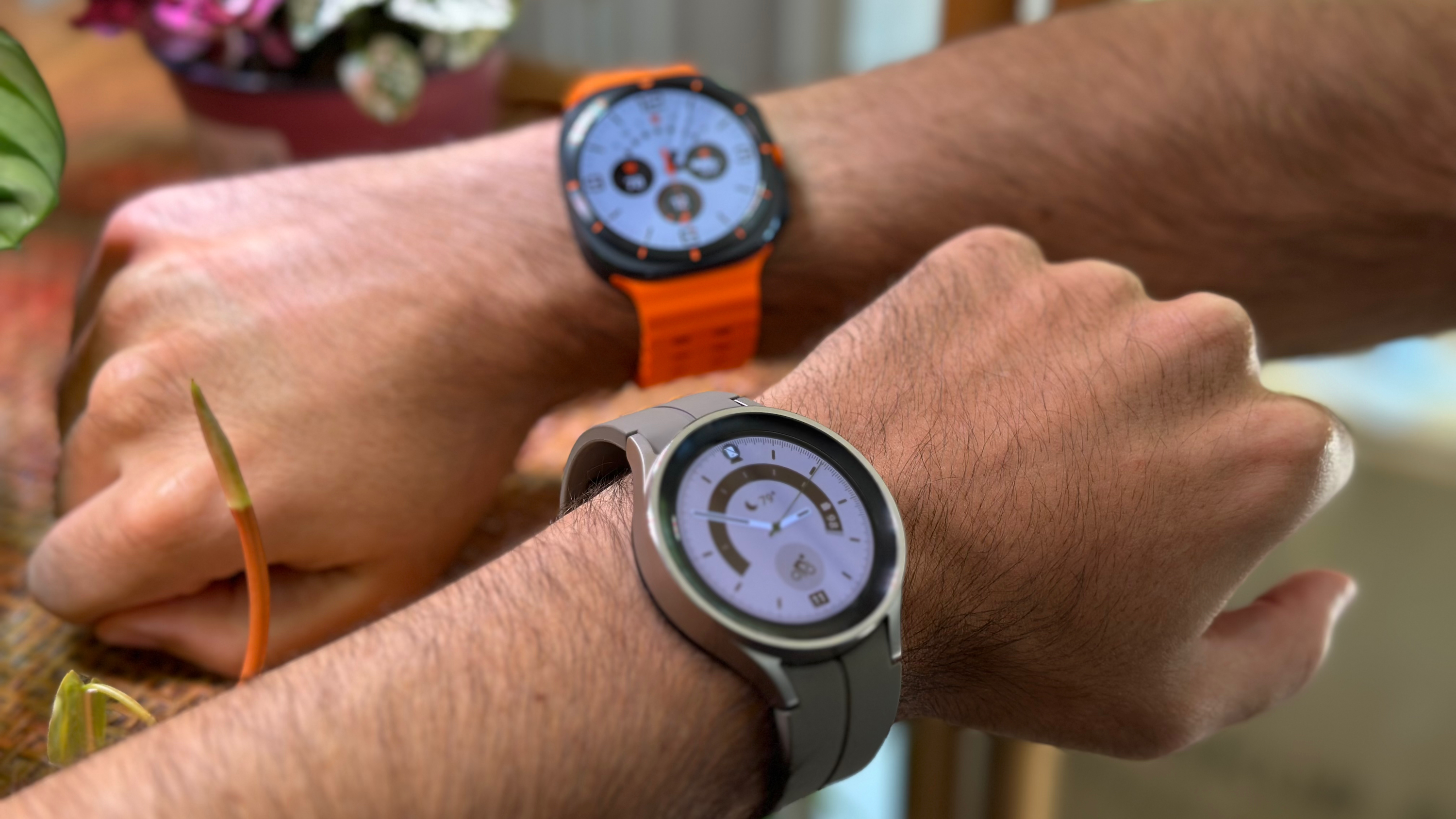
With a "normal" Android smartwatch, no, you shouldn't have to pay any post-purchase fees. But there are plenty of subscriptions associated with smartwatches.
First, if you buy an LTE version of a smartwatch, then you'll need to add your watch to your cellular plan to make it independent from your phone. The cost for this will vary by carrier, but $10–15 per month is fairly standard in the U.S.
Next, many smartwatches have fitness subscriptions, most notoriously Fitbit Premium on the Pixel Watch 3 and Sense 2. After your six-month free trial ends, you'll have to pay $10 per month for that.
Some of our other picks have optional fitness subscriptions: Garmin watches have Connect Plus, Amazfit watches have Zepp Fitness and Zepp Aura, and Withings has Withings Plus.
Lastly, Samsung has frequently warned that its AI insights are only free through the end of 2025, hinting that Samsung Health might add a subscription for these features in the future. This isn't a guarantee, but the industry is trending in this direction across brands.
How we test
☑️ One of the oldest and most trusted Android sites on the web
☑️ Over 15 years of product testing
☑️ Thousands of products reviewed and tested since 2007
☑️ Dozens of smartwatches, fitness trackers, and smart rings tested every year by our team
Android Central has been reviewing smartwatches since the original Samsung Gear series a decade ago. Since then, we've taken watches as seriously as phones; we know that smartwatches are both an extension of the Android experience and an important standalone device.
That's why we take weeks with any wearable before offering a "final" review and recommendation. For example, we published an "initial" Pixel Watch 3 review in early September with weeks of impressions, but we didn't publish our "final" Watch 3 review until late October, once we could provide long-term impressions and catch subtle issues.
With each smartwatch, we test its performance speed, battery life for both casual and active use, and its latest software and apps.
Since I took over as Wearables Editor, I've done my best to emulate the testing-heavy approach of popular fitness sites and YouTubers. I never trust the health and fitness data by default: I use chest or arm straps to test heart rate, a pedometer for step count, and multiple dual-band GPS watches to compare accuracy.
I truly mean it when I say that I won't recommend a device without first making sure that it's trustworthy, and I'll never hold back on a device's faults just because it's a popular brand.
Get the latest news from Android Central, your trusted companion in the world of Android

Michael is Android Central's resident expert on wearables and fitness. Before joining Android Central, he freelanced for years at Techradar, Wareable, Windows Central, and Digital Trends. Channeling his love of running, he established himself as an expert on fitness watches, testing and reviewing models from Garmin, Fitbit, Samsung, Apple, COROS, Polar, Amazfit, Suunto, and more.
- Andrew MyrickSenior Editor — Smartphones (North America), Chromebooks & Tablets
- Rajat SharmaContributor
